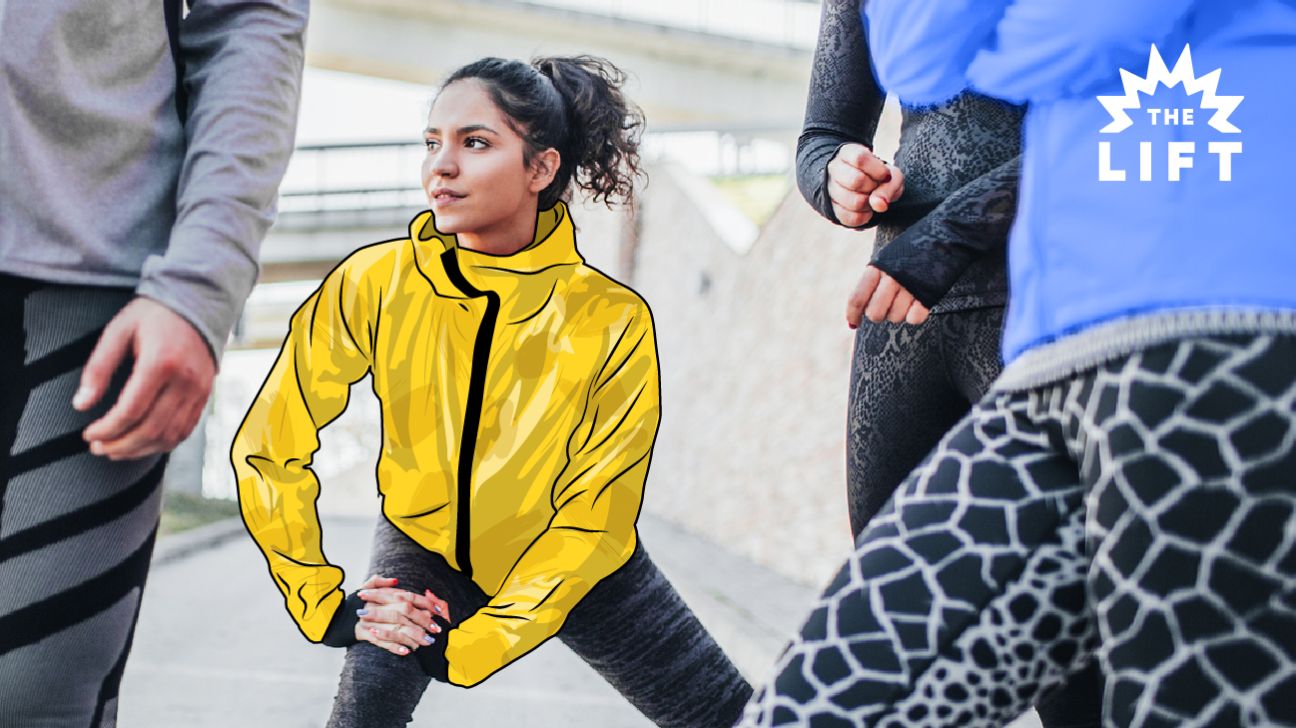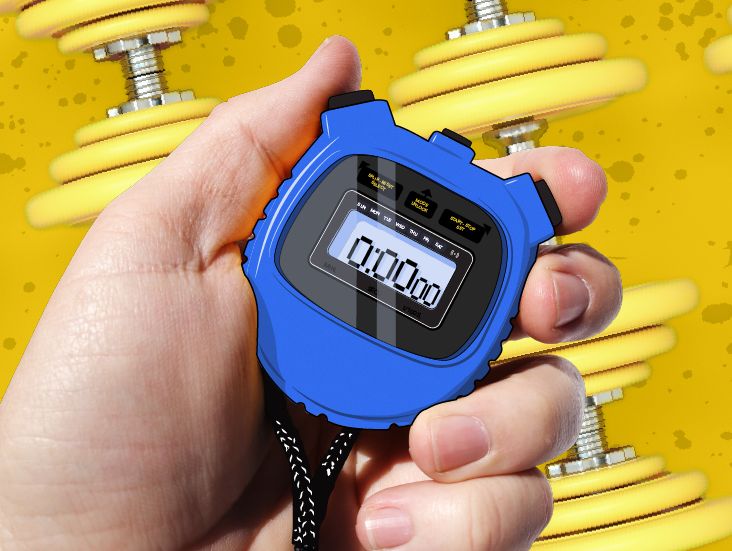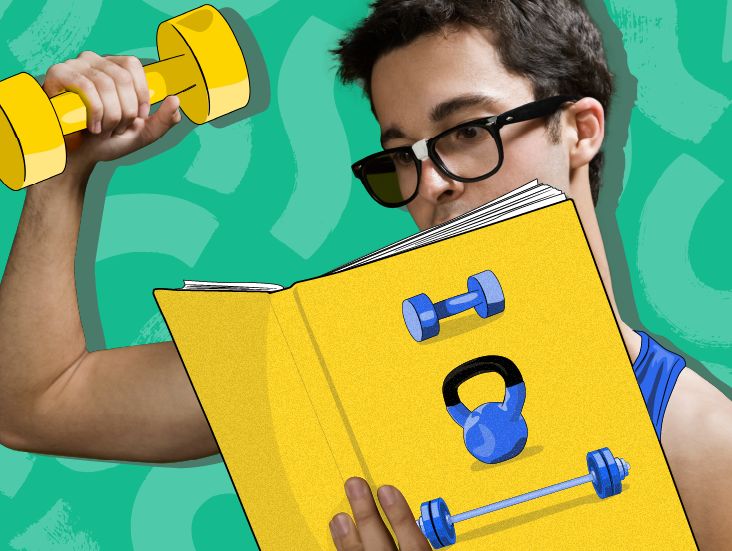
Maybe you want to evaluate the quality of your current workout program. Or maybe you’re in the process of picking a new workout plan for the new year.
Whatever the reason, if you’re here (hey, hi, hello!), it’s because you’re trying to figure out how to properly judge a workout program. Lucky for you, we’ve got some tips on that.
Read on for three signs that show a workout program is working — plus, one thing you *shouldn’t* rely on to determine a program’s effectiveness.
Every program your swolemate is doing may not necessarily work for you. Nor will the program your fave fitfluencer posts about be your go-to option for all occasions.
“There is no such thing as a one-size fits all workout program,” says certified strength and conditioning specialist Jake Harcoff MS, CSCS, TSAC-f, CISSN.
That’s because how (and how well) a workout program works for you will depend on a variety of factors including:
- training age
- genetics
- sex
- nutrition
- health
- stress levels
- sleep quality, quantity, and hygiene
It’s not about shaming or shunning anyone. It’s about recognizing who and where you are, fitness-wise, and what you want to work toward. Different exercise programs exist because we’re different.
You might be wondering: Outside the fact that my bank account isn’t being siphoned, what are some other signs that a workout program is good for me?
Well, you might’ve found a winner if:
1. You’re inching closer to your goals
An exercise program can be solid overall, but that doesn’t mean it’s always right for your specific goals.
Obvious example: A 10K run program can be a great program… but it’s not the program for you if your No. 1 fitness goal is to improve your back squat.
The first step here is to become brutally aware of your own abilities and goals. Then, pick a program geared toward those specific goals, or communicate them to your trainer if you’re working 1-on-1 with a professional.
Self-reflective questions to ask
- Am I training for a specific event or sport?
- What kind of exercise do I most/least enjoy?
- Is there a specific movement that I want to execute or weight I that want to hit?
- When would I like to hit this goal?
2. You can be honest with your coach
Fam, it’s a bad sign if you’re lying to your coach/programmer/fitness trainer.
You should be able to be honest with your coach about:
- how often you’re going to the gym
- how your program is making you feel
- when you did more or less work than what was programmed
Further, you should be able to share this information without worrying about their reaction. If the person writing your program makes you feel guilty, ashamed, or unworthy on the days you cannot adhere to it perfectly, it’s time to reconsider.
3. You’re becoming faster, stronger, or more mobile — aka gains
“In the beginning of any effective program, you are likely to see big gains,” says Harcoff. “If you aren’t seeing any improvements after 2 weeks of doing the program, it’s a sign that the program may not be working.”
Signs you’re getting faster, strong, or more mobile include:
- The same workout, weight, or distance feels easier over time.
- You can gradually do the exercise for longer or more reps.
- It takes you less time to recover from the same workout.
- Movements that use a similar movement pattern feel easier.
Contrary to common belief, being a 10/10 on the soreness scale is not necessarily a sign your workout program is good.
“The key to any program being effective is that it allows you to remain consistent and participate in regular, successive workouts,” says Harcoff.
If one day of your workout programming is leaving you so sore that you’re not able to give 100 percent in your next workout, that program is probably a fail for you.
During the first couple of weeks into a new program, you might be closer to a 5 or 6 on the soreness scale, as your body adjusts to the new exercise style. But after that, you should be closer to a 2 or 3.
As Harcoff puts it, “When working out, all you need to do is train hard enough to set off the fire alarm, not burn down the house.”
Good question!
If you were on fitness Tumblr in the early aughts (😅) or are on TikTok now(🙃), you’ve likely heard the quote: “It takes 2 weeks to feel the results, 4 weeks to see results, and 8 weeks for other people to comment on the results.”
But TBH, this quote is bull.
Why? For starters, the odds are you’ll feel results far faster than that!
Second, this quote prioritizes visual changes over nonvisual changes, like improved mood, boosted confidence, and improved health markers (i.e. lower cholesterol levels, reduced blood pressure, etc).
“It’s also hard to place a timeline on when you’ll get results from a workout program,” says Harcoff. Because while your results will depend in part on the exercise program itself, your results will also depend on what you’re doing outside of workout time.
If after 4 to 6 weeks of consistent (!!) work, you aren’t feeling, seeing, or experiencing results, Harcoff says either the program is not the best for you. Or, your out-of-gym activities are not the best for you.
Still not seeing the results you want from an exercise program after doing all the audits? Maybe take a look at some of your other habits.
“You can have the greatest exercise program ever created — but if you aren’t nailing your diet, getting enough sleep, and managing your stress, you will not see the benefits you are hoping for,” says Harcoff.
Just like evaluating a workout happens on multiple levels, evaluating your workout condition also happens on multiple levels. Are you in the right mental space for an exercise program right now? Are there other things that need your attention first? It’s not a problem to prioritize according to your needs.
Bottom line: Make sure your personal climate is right before you evaluate your workout climate.
Gabrielle Kassel (she/her) is a queer sex educator and wellness journalist who is committed to helping people feel the best they can in their bodies. In addition to Healthline, her work has appeared in publications such as Shape, Cosmopolitan, Well+Good, Health, Self, Women’s Health, Greatist, and more! In her free time, Gabrielle can be found coaching CrossFit, reviewing pleasure products, hiking with her border collie, or recording episodes of the podcast she co-hosts called Bad In Bed. Follow her on Instagram @Gabriellekassel.





